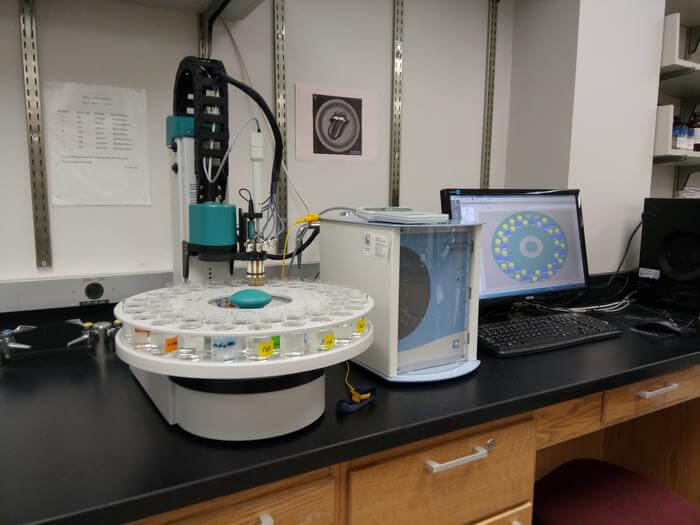PULLMAN, Wash. — It may not look like a human tongue, but a newly developed “e-tongue” still outperforms human senses when it comes to detecting contaminated wine.
During the experiment conducted at Washington State University, the strand-like sensory probes of the e-tongue identified signs of microorganisms in white wine within a week of initial contamination. That’s four weeks earlier than a human panel noticed any change in the aroma. That expedited timeline also spotted the changes before scientists could grow microbes from the wine in a petri dish. Traditionally, winemakers rely on two methods to detect wine faults or spoilage: sniffing the wine and petri dish testing.
Now, this report reveals that e-tongue testing may be able to supplement those methods, allowing winemakers to catch and mitigate problems sooner, posits Carolyn Ross, a WSU food science professor and the study’s corresponding author.
“If you ran a sample using the electronic tongue, we could learn after one week if there’s contamination or a wine fault problem, versus waiting up to four weeks running just sensory testing,” says Ross, who is also the director of WSU’s Sensory Science Center, in a media release. “It’s really helpful with understanding wine quality.”
Once immersed in a liquid, the e-tongue’s sensors can “taste” it by searching for the presence of certain compounds. At WSU, Ross’ team developed and programmed the tongue themselves for various purposes, such as taking a “fingerprint” of wine and collecting a variety of information that may be of interest to winemakers.
“It gives good information about the holistic quality of the wines,” Ross adds, though she also notes that this type of analysis is best used to complement, not replace, other avenues of judging wine quality.

During the study, researchers added four microbes to different bottles of Reisling. The microbes chosen are well known for contaminating white wine, usually resulting in spoilage and unpleasant odors (nail polish remover, geranium, and “mousy” odors). Next, they trained a group of 13 volunteers to recognize numerous wine attributes according to aromas, both positive and negative, including the aforementioned unpleasant odors.
Those trained participants went on to assess the smell of uncontaminated wine as a control and samples of the contaminated stored wine for a span of seven to 42 days. Meanwhile, the e-tongue performed the same task but identified all types of contamination after just the first seven days of storage. The human sensory panel only began detecting contamination in certain samples following 35 days of storage (28 days later than the e-tongue).
Study authors also tested the e-tongue with red wine in an earlier study. Now, they are continuing to develop the instrument housed at the WSU Sensory Science Center, contributing to an extensive library to help inform its “tasting” capacities. Professor Ross is currently searching for winery clients interested in trying the e-tongue to help assess the quality of their products.
The study is published in the Journal of Food Science.
